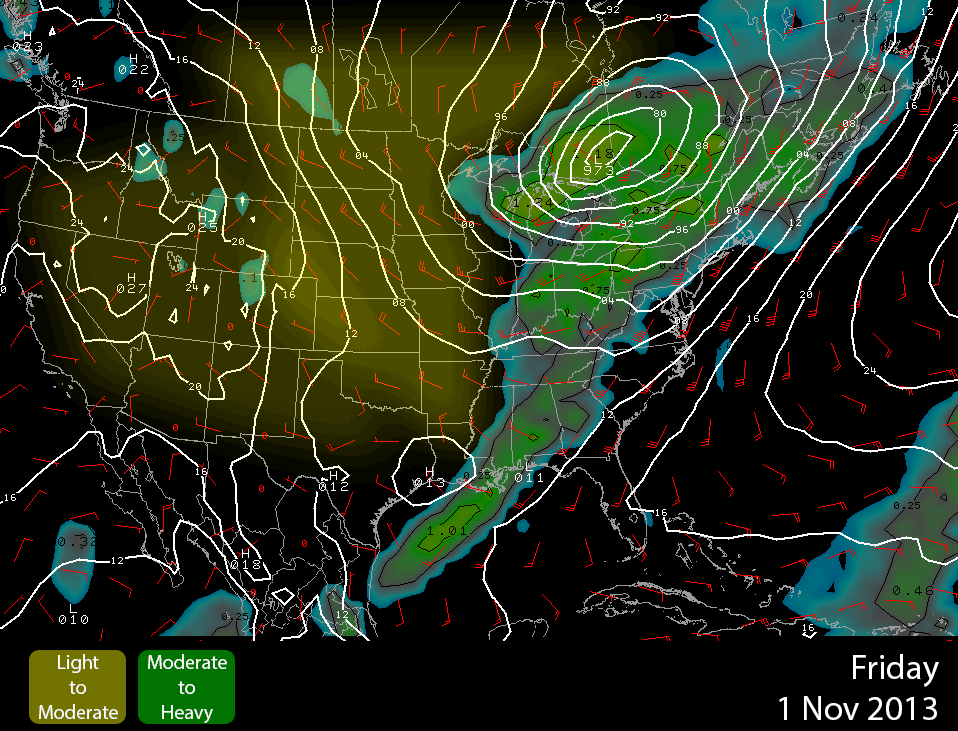Continental Summary:
Scattered light movements will occur in portions of the West, as the East sees a substantial movement to begin and end the period. Birds on the move this week will include Bufflehead, Common Goldeneye, Hooded Merganser, Ruby-crowned Kinglet, Gray Catbird, Yellow-rumped Warbler, and American Tree Sparrow.
 West
West
As we near the end of the season for regular, extensive passerine movements, the West this week experiences mostly light movements that are widely scattered. Areas East of the Rockies will see light to moderate movements to begin the period. However, several passing disturbances are forecast for the Pacific Northwest on the weekend and to end the period and in the central Rockies to begin the week that will shut down any movements in those areas. Monday and Tuesday nights will be the most favorable for light movements to occur elsewhere in the region, although these will be primarily West of the Rockies in portions of California, the southern Great Basin, and the Desert Southwest. Birds on the move this week will include Bufflehead, Common Goldeneye, Hooded Merganser, Common Loon, Black-throated Gray Warbler, and American Tree and Savannah Sparrows.
Great Plains
Northwesterly winds spawn light to moderate and locally heavy movements to begin the period, although conditions quickly deteriorate in most areas thereafter until the middle of the week. Birders should listen for waterfowl (and later season passerines) movements on Friday night and turn their eyes skyward on Saturday. Local light to moderate movements will occur in the northern Plains on Monday and Tuesday nights, before more widespread movements occur on Wednesday. High pressure builds into the region to end the period, and conditions become much less favorable as southerly flow returns. Birds on the move this week will include Snow, Ross’s, and Cackling Geese, Lesser and Greater Scaup, Bufflehead, Common Goldeneye, Red-breasted and Hooded Mergansers, Common Loon, Rough-legged Hawk, Bonaparte’s Gull, Ruby-crowned Kinglet, Yelllow-rumped Warbler, Lapland Longspur, and American Tree, Chipping, Vesper and Lincoln’s Sparrows.
Upper Midwest and Northeast
A strong low moving East over eastern Canada shuts down most movements East of the Appalachians, but light to moderate movements follow farther West to begin the weekend. Some of these movements will be heavy, given previous nights’ precipitation and unfavorable conditions. These movements become more widespread across the region by Saturday night, and some areas may experience local fallouts depending on the extent of precipitation where birds are migrating. Areas most likely to experience waterfowl or passerine fallouts and concentrations include the eastern Great Lakes and possibly portions of the Atlantic seaboard depending on how quickly the passing front departs. Favorable conditions are primarily East of the Appalachians to end the weekend, as movements continue in these areas. However, much of the remainder of the week will see sparse movements in generally marginal to unfavorable conditions, as high pressure builds into the region and then drifts East. Some coastal areas of New England will continue to experience moderate flights on Monday night. Portions of the Upper Midwest will experience more light to moderate movements beginning as early as Wednesday night, becoming more widespread on Thursday, and finally shifting East to the Atlantic by Friday night. Birds on the move this week will include Bufflehead, Common Goldeneye, Hooded Merganser, Eastern Phoebe, Ruby-crowned Kinglet, Gray Catbird, Yellow-rumped and Palm Warblers, American Tree, Chipping, Field, and White-crowned Sparrows.
Gulf Coast and Southeast
A cold front bisects the region, with little movement occurring to its East and light to moderate movements occurring to the West of the Mississippi. As it moves East, Saturday night sees more widespread moderate movements, some of which may be heavy in the western portions of the region. By Sunday night these movements occur primarily in the Southeast Coastal Plains and Peninsular Florida, and some of these will likely be heavy. As high pressure moves over the Northeast on Monday and Tuesday, on small portions of the Atlantic Coast will experience movements, although some of these may continue to be moderate to locally heavy. However, by Wednesday night, only Peninsular Florida may experience movements as the next frontal boundary begins moving East into the region. Note, as this frontal boundary dissociates on Thursday, favorable conditions for nocturnal migration spread over many portions of the region while still holding some threats of precipitation. Moderate movements will occur, and where these movements interact with precipitation, fallouts and concentrations may occur, particularly just West of the Appalachians and in portions of the Mississippi River valley. In addition, where these movements occur under poor visibility and cloud cover, particularly in areas with significant artificial illumination, flight calling will be apparent and extensive. Birds on the move this week will include Lesser Scaup, Bufflehead, Hooded Merganser, Common Loon, American Pipit, American Robin, Cedar Waxwing, Yellow-rumped Warbler, Indigo Bunting, Song and White-throated Sparrows, Dark-eyed Junco, and Purple Finch.




